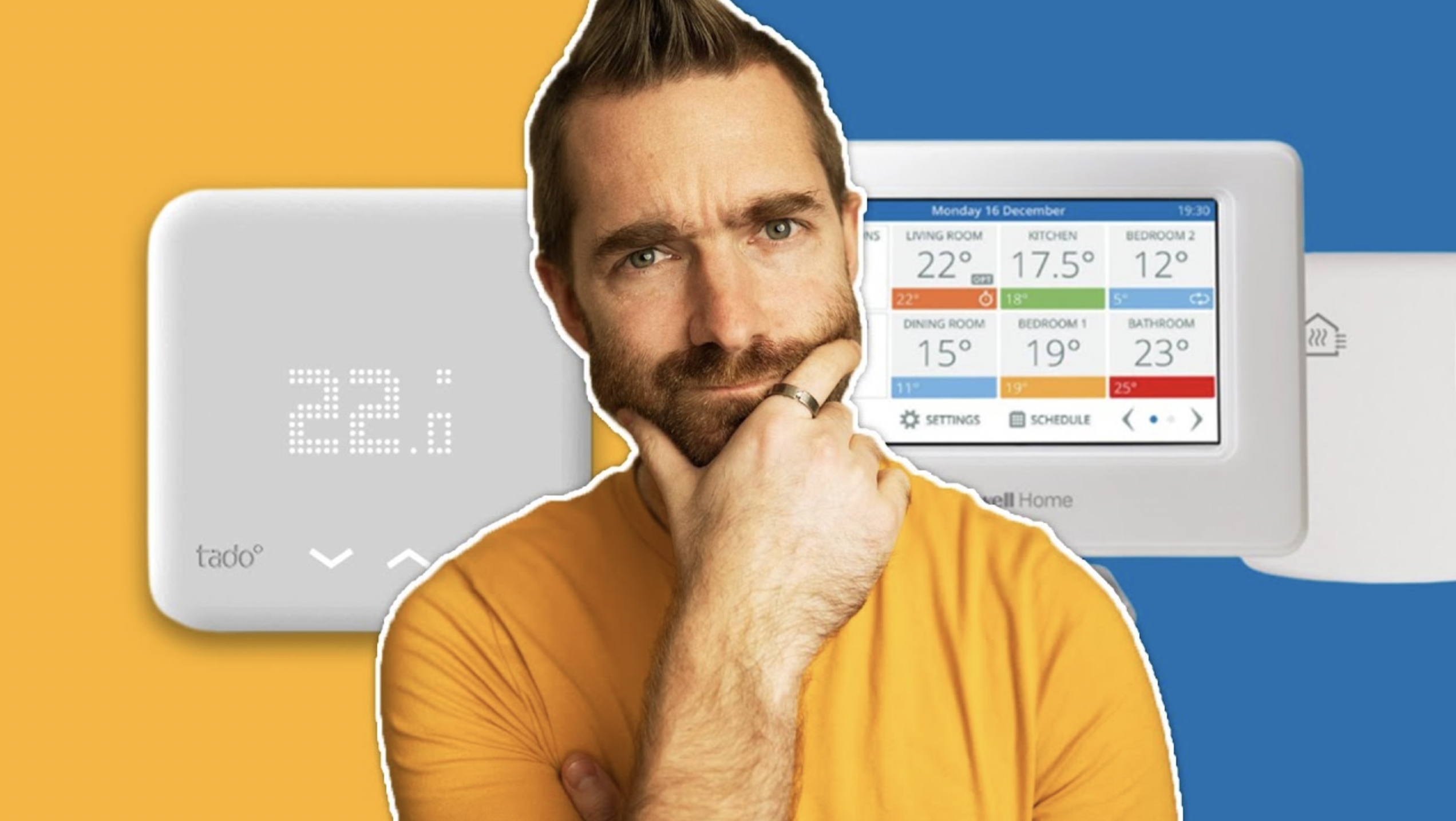Energy prices are soaring, our bills are getting more and more expensive, and there’s a crisis with no end in sight.
There are a few smart heating systems on the market, such as Tado, Nest, and Honeywell Evohome, and for me, investing in one of these is the best way to control your energy costs.
These systems allow you to control the temperature of each room individually, so if you’re working from home and only using one room most of the day, you can heat only that one room, rather than heating the entire house with a traditional, centralised heating system.
Whilst it does cost you money to buy one of these systems, it's the best way to fight the increasing energy costs that we see racing towards us. Let's be honest, costs are going up way faster than any of us could have anticipated.
Similarities
Fundamentally, both systems do pretty much the same thing. There are valves that you fit onto each radiator that you want to control, and then you can use the App to control the temperature and how often you want them to come on. They’re pretty easy to fit, just unscrew the old one and screw on the new one.
You can customise the app settings for heating to come on, on a day-by-day basis or set consistent heating times for the week. The app interface for both systems is relatively similar. Tap into each room, and you can manually control the temperature.
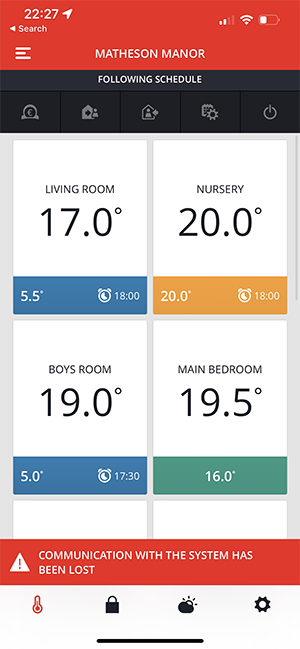

There are some limited smart features on both of the apps, such as the rooms not heating when it's a warm day outside. This is where we start to see some differences that I believe, push the Tado ahead of the Honeywell system.
FEATURE 1 - LOCATION
This feature in Tado tracks your location so that the heating cools down by a few degrees when you leave, and when you approach your home, it will intelligently warm up the house for you.
To get this automatic option, you do need to subscribe to the Tado subscription service. It's a small charge per month or £25 per year. But with the monthly subscription, you can subscribe only in the months you need to use it. Therefore you can subscribe in the winter, then leave it switched off and don’t subscribe in the summer.
The Honeywell Evohome system doesn't offer this feature. It doesn't know you have left the house at all. Instead, you have to sign up for a service like IFTTT and create an automation for; If I leave home, switch it off; If I enter the home, then switch it on.
It’s not that difficult to set up, but considering it has an App, that’s on your phone, that’s constantly tracking you - I don’t see why it can’t do it without faffing around with something else!
FEATURE 2 - LOOKS, NOISE & CHILD TAMPERING
In my personal opinion, I like the look of the Tado system better.
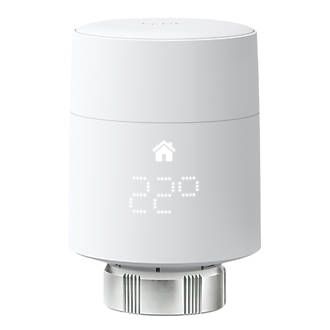
The noise that you hear when the TRVs are turning the radiators up or down, on the Tado is MUCH quieter and it's faster! Compared to the Evohome, which you definitely can hear, and to a point where my kids have complained about the noise in their bedroom at night.
When it comes to child tampering, the use of a flippy LCD screen design that just beckons children to mess with it - why?! I've lost a few of these with the kids lifting them up and twisting them off.
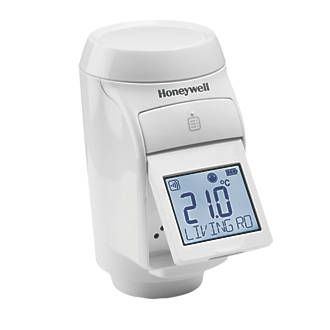
Honeywell does offer a solution for it - basically, it’s a fixed piece of plastic that clips in and forces the screen up. But it’s still not a great fix, and I’m only lucky that my kids are too old for messing around with them now.
Speaking of tampering, both systems allow you to lock the TRVs so you can’t change them by twisting them - instead, you can only change them via the App. This brings me to another frustration with the Honeywell system.
The Child lock setting, can’t be changed from inside the App. It can only be changed from the main control screen, and even then it’s hidden away under a secret installer menu. My other frustration is that the Honeywell system doesn’t really give you anything in terms of historical reporting of room temperatures.
The Tado, lets you easily see the historical temperature of the room and when heat is being called for from the boiler. It even brings in other stats such as the Sun and Rainfall.
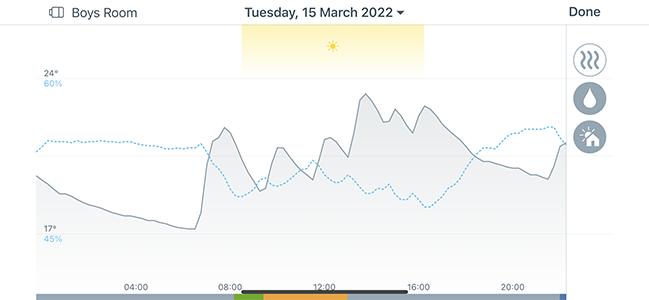
It doesn’t stop there either. Each Tado Thermostat has built-in humidity sensors, and there’s a feature called Energy IQ which allows you to enter your tariff information, and the App will calculate how much you’ve spent throughout each month. There’s also a whole page dedicated to savings which I am yet to get access to because I haven’t yet had a full calendar month of use yet.
There’s an Air Comfort section in the App that actually, provides some really in-depth statistics on the air quality outside which it doesn't do via its own sensors as it uses the Internet to pull that in for your location, but it’s still good to see.
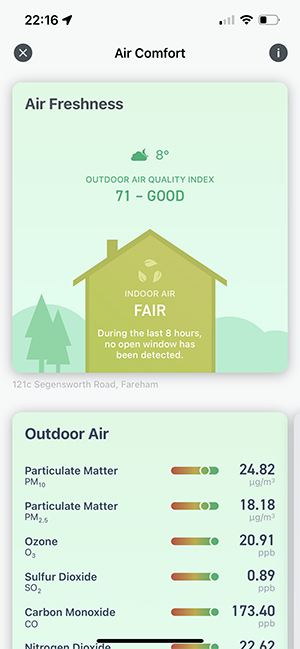
Another great feature in Tado is the pollen forecast. This comes in really handy when you have kids with allergies and can help you plan when pollen is going to be really high.
There’s a Care and Protect section which, I’m not sure how exactly, but says it will monitor your boiler for any unusual activity and pre-warn you - with some additional links to book a repair, a new boiler quote, and a section which I really quite like where it shows you which rooms in your house have spent the most time heating.
If I had to talk negatives, I would say that Battery life is something that you might be concerned about overtime, because, with 12 of these around my house, that’s quite a lot of batteries to replace, however, to be fair to both systems, they do last a considerable amount of time. (2 Years expected life)
THE DIFFERENCES
The Honeywell system doesn’t show you battery level in the App. It only shows you a warning on the main screen, whereas the Tado App lets you see this and check on the battery and TRV status, another thing the Honeywell doesn’t do - because if the TRV isn’t mounted on the radiator, then it shows you.
The next thing is how long it takes from making a change on the app, for it to reach the radiator.
The Honeywell was about 2 minutes. Whereas on the Tado, it was about 10 seconds. So - it’s no surprise that the Tado system is by far the better system to buy out of the 2, in my opinion, but what about the cost?
COST
Take my house as an example. I have a Combi boiler with no water tank and 12 radiators that I want to control.
The good news is that at least here in the UK, now is the perfect time to buy one of these systems. It’s just approaching spring, and so there are some pretty good discounts at the moment.
The Tado - for the system and 12 TRV’s, came to £704.
The Honeywell Evohome comes to a ridiculous £1,300.
So buy the Tado, it’s definitely the best of the two systems.

